- Home
- Tom Clancy
SSN Page 6
SSN Read online
Page 6
On behalf of the crew, Mack decided to keep the time at periscope depth to a minimum. After copying the SSIXS broadcast and verifying that there were no surface contacts in the vicinity, Mack ordered the OOD to proceed deep beneath the storm, which unfortunately had eroded the first thermal layer, causing an isotherm (constant temperature) from the surface to over six hundred feet.
Six hours earlier, Cheyenne had arrived safely at her rendezvous point with the carrier Independence one hundred miles northwest of Natuna Island. The entire Independence Battle Group was now heading in the direction of the Spratly Islands. Cheyenne’s current assignment was to patrol the nearby waters in search of any enemy submarines that might try to sneak up on the Battle Group.
In a way, Cheyenne was operating like a fighter pilot assigned to air cover. She was Independence‘s first line of ASW defense, 130 miles ahead where the noise of the Battle Group’s ships would not degrade Cheyenne’s sonars, and where the F-14s from Independence could, in better weather, provide about a ten-hour heads-up to Cheyenne on approaching surface targets.
Mack was looking forward to the escort duty, a chance to be the SSN(DS) (direct support) for which the Los Angeles class was originally built. Not only would it be a nice change of pace but, more important, it meant he could have assistance from the carrier if and when he needed it.
The only problem was that Cheyenne was alone. Instead of sharing the 180 sector forward of the Battle Group with two other SSNs, Mack had it all. That was fine for the prevention of mutual interference, especially in a shooting war, but it was an impossibly large area of responsibility for a single SSN.
Independence was the last active member of the Forrestal class of aircraft carriers. These vessels, the first real “supercarriers,” were built during the 1950s. By 1997 they all had been decommissioned except Independence. At one point, there had been plans to turn “Indy’s” sister ship, Forrestal, into a training carrier, but those plans had been scrapped due to budget cuts. Independence herself had been scheduled for decommissioning in October of this year, but Mack suspected that this war might change things.
All aircraft carriers’ strength lay with their aircraft, and CV-62 was no exception. Independence’s aircraft were as good or better than any combat aircraft in the world. Her current complement of aircraft included twenty F-14 Tomcats for long range interceptor missions. With their new precision strike capability, the F-14s were sometimes referred to as the “bomb cat.” Independence also carried F/A-18 Hornets, which were perhaps the best dual-capable (fighter/attack) aircraft in the world. The Independence air wing commander, now an aviator O-6 major command billet, could use them to defend the carrier or to attack far-off targets on land or at sea. Also on board were four E-2C Hawkeyes and four EA-6B Prowlers. The Hawkeyes were early warning planes and each one carried the APS-145 radar in a large disk connected to the top of its fuselage. The Prowlers specialized in radar jamming and other forms of electronic warfare.
Perhaps her most valuable aircraft, at least as far as Mack was concerned, were the S-3B Vikings, the submariner’s favorite. This was one of the world’s great aircraft designs, combining an extremely long range and an excellent ability to hunt “enemy” submarines. During several exercise encounters with S-3s, Mack had learned to respect them greatly, and he was glad that they were on his side.
The only aircraft that could possibly compete with the Viking was the SH-60 Seahawk helicopter. It lacked the range of the S-3, but Cheyenne had seen for herself just how effective the Seahawks could be. This was the aircraft that had earlier destroyed the Chinese Han submarine while Cheyenne tracked their actions by sonar, and Independence carried six of them. Because of her immediate locality to the war zone and the risk from Chinese submarines, Independence had been designated as the test ship for the new SH-60Rs — the newest type of Seahawk. This was the first to carry both the new airborne low-frequency dipping sonar, usually referred to as ALFS, and sonobuoys. It also had two torpedoes on board — either the powerful Mk 50 or the older Mk 46. These factors combined to make the SH-60R the most dangerous short-range ASW platform hovering over the seas.
Even with all this firepower on board, the carrier still had her serious vulnerabilities. She needed to be escorted by surface vessels, and her entire group was vulnerable to modern enemy submarines. And that was where Cheyenne came into play. She would act as an advance party for Independence, proceeding well ahead of the Battle Group and either clearing a safe path or warning them of possible dangers that the F-14 radars couldn’t detect. This combination of surface ships, aircraft, and submarines resulted in what Mack referred to as “synergism,” where the end result of operating together would be far more devastating to the Chinese than if each warfare community operated alone.
Unmindful of the weather, the Independence Battle Group got under way, steaming northward in the direction of the Spratlys. Travelling at flank speed, Cheyenne executed a quick sprint to regain her station in front of the Battle Group. If Mack fell behind the trailing edge of his moving search sector, Cheyenne would be free game, the so-called friendly fire problem that was a sad reality of warfare. When she was near the leading edge of her moving haven slightly over an hour later, Cheyenne slowed and waited.
After slowing, Mack ordered the OOD to deploy the TB-23 towed array for its long-range tonal-detection capability. The report came back exactly as he’d hoped — no contacts on the towed array. The sonar room watch standers watched their consoles and waited for Mack’s next orders.
“Officer of the deck, prepare to come to periscope depth,” Captain Mackey ordered. Mack wanted to relay information about the safety of their route back to the Independence Battle Group.
“Prepare to come to periscope depth, aye, sir,” the OOD replied.
But Mack didn’t get the chance to report to Independence. Before Cheyenne came shallow enough to transmit, she began to receive message traffic over the floating wire.
“Sir,” the communicator reported, “it looks like we just got new orders!”
Mack went to the radio room, grabbed the sheet of printer paper, and quickly read the message.
“Looks like a strike mission to me,” the communicator said, with a note of eagerness and brashness. “What do you think, sir?”
That annoyed Mack. It was a breach of protocol, and not smart. He looked at the communicator and shook his head. “Call a meeting in the wardroom in ten minutes,” he said, putting an edge in his tone. “I want the executive officer, the combat systems officer, the operations officer, and yourself there.”
The communicator knew he’d screwed up. “Ten minutes, in the wardroom, aye, sir,” he said. The cocky note was gone from his voice.
Cheyenne returned to a patrol depth of 247 feet since the first thermal layer was gone, and within eight minutes all requested officers were waiting for Captain Mackey to arrive in Cheyenne’s wardroom. Mack came in five minutes late. He carried a plain manila folder in his hand.
“Gentlemen,” he said. “I have called this meeting in order to pass on our new orders. From our present position in the South China Sea, we are to proceed to the north of the Chinese-held Spratly Islands. Once there, three hundred miles north, we will launch six Tomahawk land-attack missiles at the Chinese submarine base that has recently been set up near Cuarteron Reef, one of the islands in the Spratly chain.”
He paused to see how the others would react. He was pleased to see that, while there was some tension, it was mostly excitement, with only a touch of healthy caution. He was also pleased that the communicator kept his mouth shut.
“As you all know,” Mack continued, “naval intelligence has reported large numbers of Chinese submarines operating in this area. We’ve confirmed this with our own detections. Our new orders are to do something about that.” He paused again, making sure that everyone was paying full attention. “We are going to enter the belly of the beast,” he said. “We will launch our Tomahawks as ordered, and then we will meet up with the subm
arine tender USS McKee in order to rearm.” He grinned and added, “Maybe we’ll even get a quick glimpse of life on the surface.”
His lighthearted joke helped to ease the tension slightly. The assembled officers had a few questions. They discussed their options, and then Mack dismissed them to return to their duties. When he had returned to the conn, he used the 1MC to inform the crew of their new mission. From there on out, Cheyenne would use sound-powered phones instead of general announcing systems.
Forty-five minutes later Cheyenne once again went to periscope depth. The seas had abated somewhat, but copying SSIXS required the use of the long, multipurpose communications mast to preclude the loss of synch caused by waves slapping over the Type 18 periscope communications antenna.
Mack stayed at that depth just long enough to receive preliminary Tomahawk targeting data. This information, which they would confirm when they got closer to their launch position, would be fed to their cruise missiles prior to launching the Tomahawks. Mack hoped the weather would be better north of the Spratlys.
When the data transfer was complete, Cheyenne detached from the Independence Battle Group without report and proceeded on her own. Mack had enjoyed having the carrier nearby for backup and air defense, but now Cheyenne was going back to doing what she did best: operating on her own, sneaking up on the enemy, and blowing them to hell.
* * *
Three hundred fifty miles southwest of Cuarteron Reef, running at four hundred twenty-five feet, Cheyenne picked up her first contact. Mack was in the sonar room.
“Captain,” the sonar supervisor reported, “we have a sonar contact bearing 020 on the spherical array. The contact’s intermittent, so I think we’re receiving the sound source via a convergence zone. We pick her up loud and clear, then we lose her and don’t hear anything for a while.”
While normal sound traveled through water in waves that gave at least some predictability, there were some areas in which sound waves were turned up toward the surface and then often bounced back into the sea. These were called convergence zones, and they could allow sonar to detect these sound waves at far greater ranges than would otherwise be possible. If the water was deep enough and the sound velocity excess was present at depth, these zones commonly occurred about every thirty miles. In a way, the ray paths of the acoustic energy were much like AM radio transmissions, which could travel in a straight line, then bounce off the ground and up into the atmosphere, and then come back to earth. This allowed AM frequencies to broadcast much farther than FM, though beyond their immediate range they could be picked up only in pockets and were more affected by weather.
“My guess,” the sonar supervisor added, “is that it’s in the second convergence zone from us.” That would put the signal’s source at a range of more than sixty nautical miles, or 120,000 yards.
“Keep an eye on that contact,” Mack said. If the sonar supervisor was right and Cheyenne‘s operators had indeed heard their sonar contact through a convergence zone, then the signal’s source was far out of Cheyenne’s weapons range. It also meant that the thermal gradients in the deeper waters of the South China Sea had not been eroded by the storms. But if the sonar supervisor was wrong, Cheyenne could be in for some very dangerous close combat.
Sixty-three miles away, 200 feet below the surface of the South China Sea, crept one of the newest additions to the Chinese fleet, and one of China’s best submarine captains. The Chinese Kilo submarine had been in service for less than two years and had made its crew very proud.
The first Chinese Kilo submarines had been bought from Russia in 1993 and delivered in February 1995. The Chinese had planned to buy up to fifteen of these powerful diesel submarines and had hoped that they would be able to build five more themselves, under license from Russia.
This particular submarine had excellent equipment, with the exception of her passive sonar outfit. That was the problem with all Russian submarines, as its captain knew. The Russians could not make a decent passive submarine sonar — at least not one that his country would be allowed to buy.
And that was a problem. At any given moment, there might be an American Los Angeles class submarine sneaking up on his position, and he would never know it until it was too late.
The captain of the Chinese submarine wasn’t too worried about it, though. His was the lead ship of three. Below the waves, his Kilo was working in tandem with an older Romeo class diesel submarine. Above them, Jinan, a Luda class destroyer, patrolled the surface. Their mission was to hunt down and destroy any American ships and submarines. In addition, there was another Kilo well off to the side — not part of his task force, but it could provide assistance if he needed it.
The captain of the Kilo welcomed Jinan more than he did the Romeo. For one thing, the destroyer’s two turbines were loud, which would hopefully distract any enemy’s sonar from any noises his Kilo might make. Even more important, however, Jinan, like all Luda type II destroyers, carried two French ASW helicopters. Those would be very useful if the Kilo needed help while engaging an American submarine.
As pleased as the Kilo’s captain was with the surface ship, he was equally displeased with the Romeo. It was an old attack submarine that had been reactivated from the naval reserve, and, in his opinion, it was more of a threat to his own submarine than it was to the enemy. It was too noisy, for one thing. That could be desirable when the noise came from the surface, but down below it would only serve to alert the Americans to the presence of one or more Chinese submarines in the area.
Worse, the farther he tried to get from the Romeo, the more it tried to stay close to him. The Romeo captain was no fool. He knew he stood a better chance under the protection of the Kilo than he did on his own.
Assuming, that is, that the Kilo captain didn’t sink the Romeo himself.
* * *
Back on board Cheyenne, sonar was trying to reacquire contact. Mack had gone back to 247 feet to continue the search, while at the same time maintaining copy over the floating wire.
In the control room, Mack was looking at the BSY-1 fire-control console, which he liked to keep online for himself. “Sonar, conn, have you regained contact on Master 24?”
“Conn, sonar, we’re working on a possible contact,” the sonar supervisor said, “but I’m not sure it’s the same convergence zone one. This one may be a surface ship. Master 24 was tentatively classified as a submerged submarine.”
Several minutes later, the sonar supervisor reported that he had not one contact, but two, one Romeo submarine and one Luda destroyer, both bearing 020. They were both given new Master Numbers, designated Masters 25 and 26 respectively, since the sonar supervisor was not sure if either one was Master 24. Reconstruction would have to sort it out later. Without hesitating, the OOD ordered his section fire-control tracking party manned. Mack went to the sonar room.
“Good job,” Mack said, unaware that they had failed to detect the Kilo that was in the area of Masters 25 and 26. “Anything else out there?”
“Not that we can tell yet, Captain,” the sonar supervisor said, “but those two contacts are loud. We can hear them aurally, so there could be more ships operating in the area.”
Mack left the sonar room and went back to the control room. The BSY-1 operators had a rough solution on range, about 30,000 yards.
At Cheyenne’s current speed of ten knots, Mack would soon be within range to launch his Mk 48 ADCAPs at the Chinese contacts. When he got closer, he would slow. No need as yet for long-range shots. Cheyenne was currently running with the TB-23 towed-array fully deployed and, with the OOD’s maneuvers, the section fire-control tracking party at the BSY-1 computers was getting better and better solutions on the Chinese destroyer and submarine.
“Conn, sonar, the TB-23 just picked up a helicopter overhead,” the sonar supervisor announced. “Probably flying from the Chinese destroyer.”
“Take her down fast, to five hundred feet!” Mack ordered the OOD. This was another helo “Sierra” addition to his patrol
report.
Throughout Cheyenne, sailors grabbed for whatever they could as the submarine headed down at standard speed with a twenty-degree down angle. The diving officer, helmsman, and planesman had all buckled their seat belts as soon as they heard “take her down fast.”
Above them, the Chinese Z-9A helo hovered and began to lower its powerful French HS-12 dipping sonar via the hydraulic winch. The winch was touted to be “high speed,” but it didn’t seem fast enough for the helo pilot as it slowly lowered the HS-12 toward the water.
“Conn, sonar, we just received a sonar pulse from the helicopter’s dipping sonar. It’s a French type, HS-12-the same kind they sold to China. The transmission came from the opposite direction of the Romeo. I don’t think they could have detected us, sir. Signal level of the pulse was low.” Which probably meant the helo was quite a ways off or else it hadn’t dipped its sonar beneath the layer.
Mack acknowledged for the OOD. “Very well, sonar, we have it out here on the WLR-9 as well,” he said. “Were we able to pick up any other information from the transmission?”
“Sonar, conn, negative,” the sonar supervisor answered. “It wasn’t a very strong pulse. Let’s hope she ran out of batteries.”
Mack smiled at the joke. Unlike the communicator’s earlier gaffe, this comment was well timed, and helped to ease the tension slightly.
One hour and fifteen minutes later Cheyenne had closed to within 20,000 yards of her targets, Masters 25 and 26. Mack ordered battle stations manned.
A few minutes later the helo was active again. The WLR-9’s acoustic intercept receiver at the conn picked that one up also, even though it was near the baffles.
“Conn, sonar, that was a loud one, sir,” the sonar supervisor said.

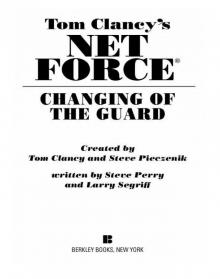 Changing of the Guard
Changing of the Guard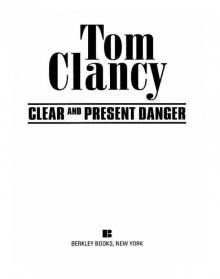 Clear and Present Danger
Clear and Present Danger Hounds of Rome
Hounds of Rome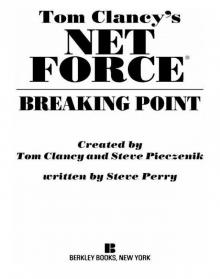 Breaking Point
Breaking Point Tom Clancy's Jack Ryan Books 7-12
Tom Clancy's Jack Ryan Books 7-12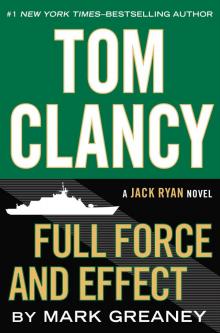 Full Force and Effect
Full Force and Effect The Archimedes Effect
The Archimedes Effect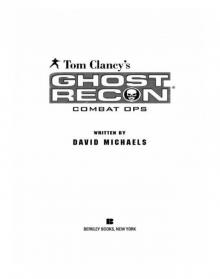 Combat Ops
Combat Ops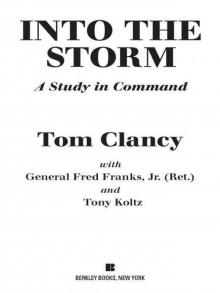 Into the Storm: On the Ground in Iraq
Into the Storm: On the Ground in Iraq Under Fire
Under Fire Point of Impact
Point of Impact Red Rabbit
Red Rabbit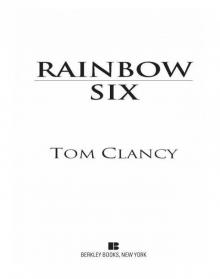 Rainbow Six
Rainbow Six The Hunt for Red October
The Hunt for Red October The Teeth of the Tiger
The Teeth of the Tiger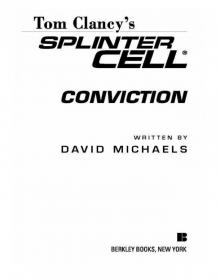 Conviction (2009)
Conviction (2009)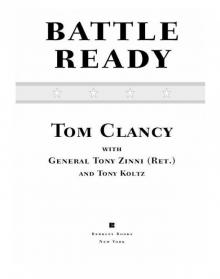 Battle Ready
Battle Ready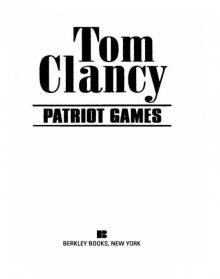 Patriot Games
Patriot Games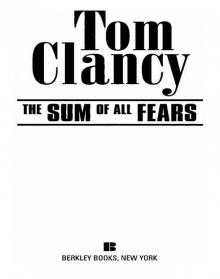 The Sum of All Fears
The Sum of All Fears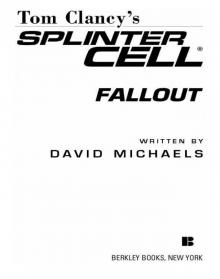 Fallout (2007)
Fallout (2007) Red Storm Rising
Red Storm Rising The Cardinal of the Kremlin
The Cardinal of the Kremlin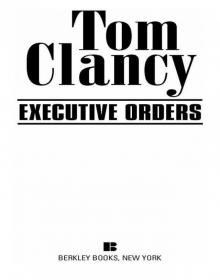 Executive Orders
Executive Orders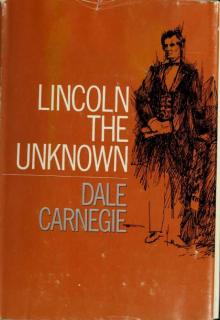 Lincoln, the unknown
Lincoln, the unknown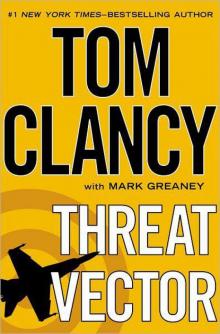 Threat Vector
Threat Vector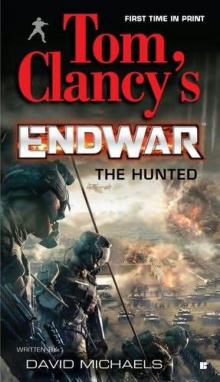 The Hunted
The Hunted Shadow Warriors: Inside the Special Forces
Shadow Warriors: Inside the Special Forces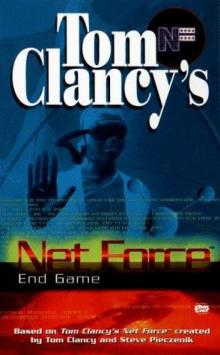 End Game
End Game Special Forces: A Guided Tour of U.S. Army Special Forces
Special Forces: A Guided Tour of U.S. Army Special Forces Locked On
Locked On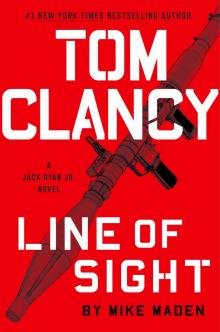 Line of Sight
Line of Sight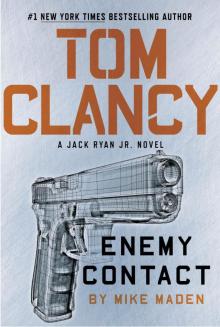 Tom Clancy Enemy Contact - Mike Maden
Tom Clancy Enemy Contact - Mike Maden Fighter Wing: A Guided Tour of an Air Force Combat Wing
Fighter Wing: A Guided Tour of an Air Force Combat Wing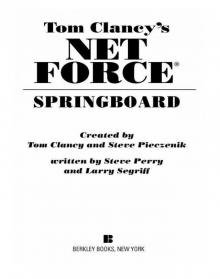 Springboard
Springboard Line of Sight - Mike Maden
Line of Sight - Mike Maden EndWar
EndWar Dead or Alive
Dead or Alive Tom Clancy Support and Defend
Tom Clancy Support and Defend Checkmate
Checkmate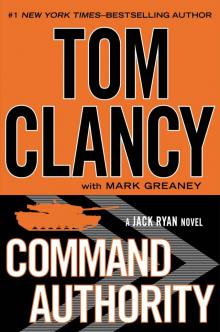 Command Authority
Command Authority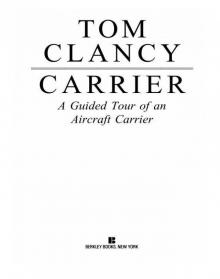 Carrier: A Guided Tour of an Aircraft Carrier
Carrier: A Guided Tour of an Aircraft Carrier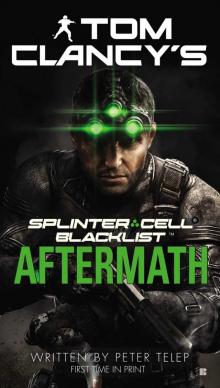 Blacklist Aftermath
Blacklist Aftermath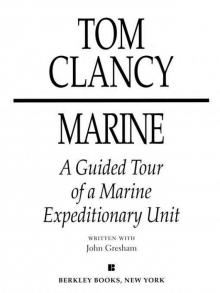 Marine: A Guided Tour of a Marine Expeditionary Unit
Marine: A Guided Tour of a Marine Expeditionary Unit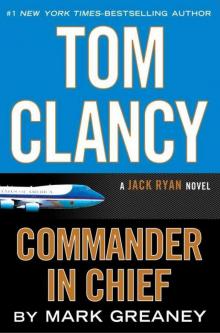 Commander-In-Chief
Commander-In-Chief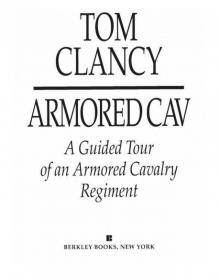 Armored Cav: A Guided Tour of an Armored Cavalry Regiment
Armored Cav: A Guided Tour of an Armored Cavalry Regiment Tom Clancy's Jack Ryan Books 1-6
Tom Clancy's Jack Ryan Books 1-6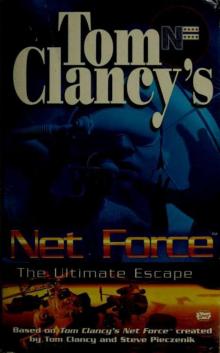 The Ultimate Escape
The Ultimate Escape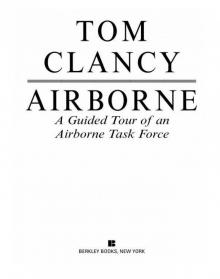 Airborne: A Guided Tour of an Airborne Task Force
Airborne: A Guided Tour of an Airborne Task Force Debt of Honor
Debt of Honor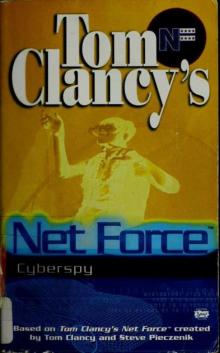 Cyberspy
Cyberspy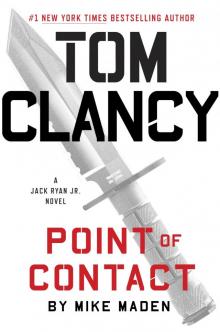 Point of Contact
Point of Contact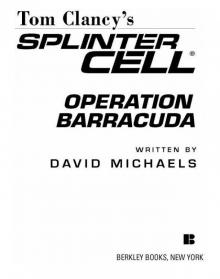 Operation Barracuda (2005)
Operation Barracuda (2005)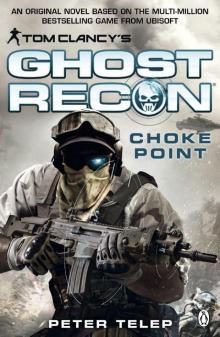 Choke Point
Choke Point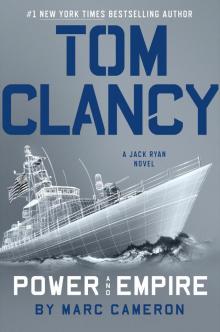 Power and Empire
Power and Empire Every Man a Tiger: The Gulf War Air Campaign
Every Man a Tiger: The Gulf War Air Campaign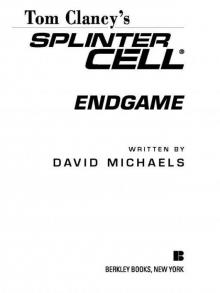 Endgame (1998)
Endgame (1998)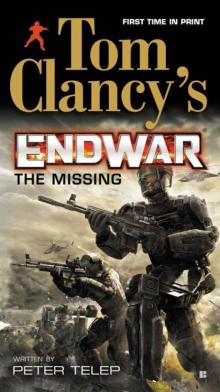 EndWar: The Missing
EndWar: The Missing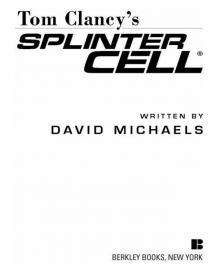 Splinter Cell (2004)
Splinter Cell (2004)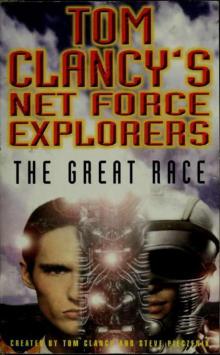 The Great Race
The Great Race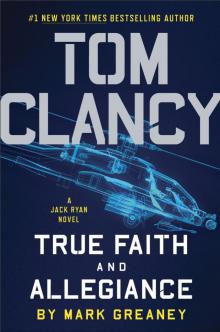 True Faith and Allegiance
True Faith and Allegiance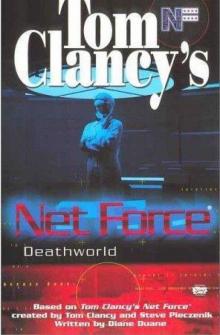 Deathworld
Deathworld Ghost Recon (2008)
Ghost Recon (2008)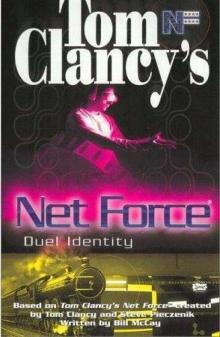 Duel Identity
Duel Identity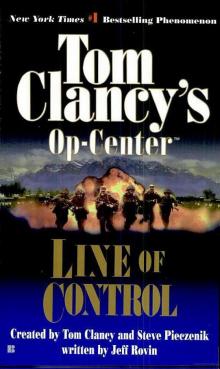 Line of Control o-8
Line of Control o-8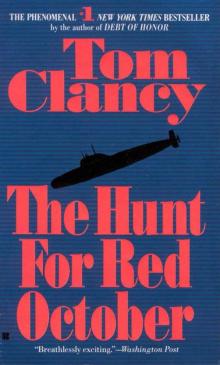 The Hunt for Red October jr-3
The Hunt for Red October jr-3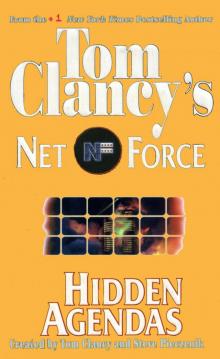 Hidden Agendas nf-2
Hidden Agendas nf-2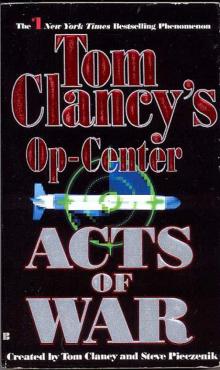 Acts of War oc-4
Acts of War oc-4 Ruthless.Com pp-2
Ruthless.Com pp-2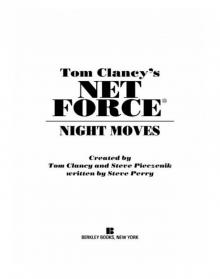 Night Moves
Night Moves The Hounds of Rome - Mystery of a Fugitive Priest
The Hounds of Rome - Mystery of a Fugitive Priest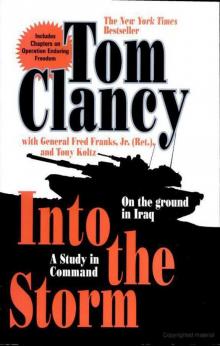 Into the Storm: On the Ground in Iraq sic-1
Into the Storm: On the Ground in Iraq sic-1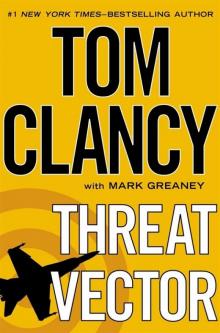 Threat Vector jrj-4
Threat Vector jrj-4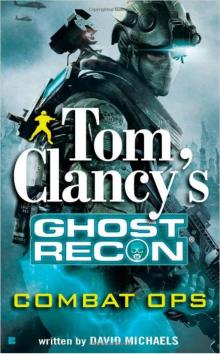 Combat Ops gr-2
Combat Ops gr-2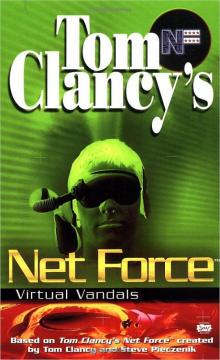 Virtual Vandals nfe-1
Virtual Vandals nfe-1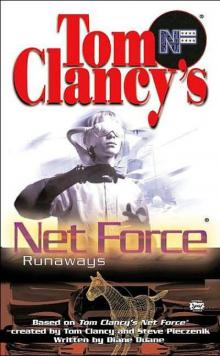 Runaways nfe-16
Runaways nfe-16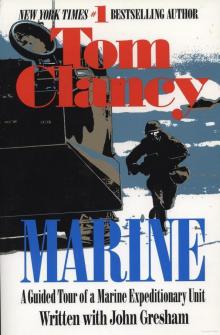 Marine: A Guided Tour of a Marine Expeditionary Unit tcml-4
Marine: A Guided Tour of a Marine Expeditionary Unit tcml-4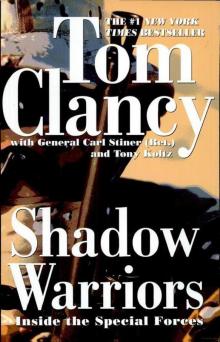 Shadow Warriors: Inside the Special Forces sic-3
Shadow Warriors: Inside the Special Forces sic-3 Jack Ryan Books 1-6
Jack Ryan Books 1-6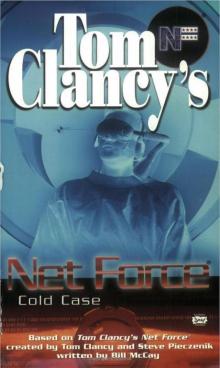 Cold Case nfe-15
Cold Case nfe-15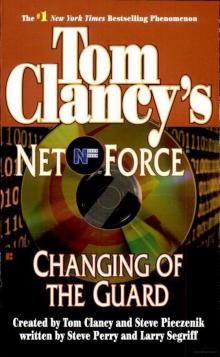 Changing of the Guard nf-8
Changing of the Guard nf-8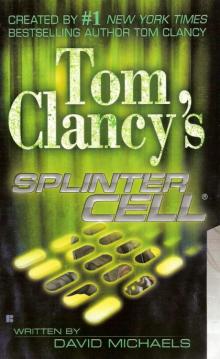 Splinter Cell sc-1
Splinter Cell sc-1 Battle Ready sic-4
Battle Ready sic-4 The Bear and the Dragon jrao-11
The Bear and the Dragon jrao-11 Fighter Wing: A Guided Tour of an Air Force Combat Wing tcml-3
Fighter Wing: A Guided Tour of an Air Force Combat Wing tcml-3 Patriot Games jr-1
Patriot Games jr-1 Jack Ryan Books 7-12
Jack Ryan Books 7-12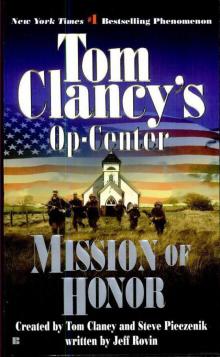 Mission of Honor o-9
Mission of Honor o-9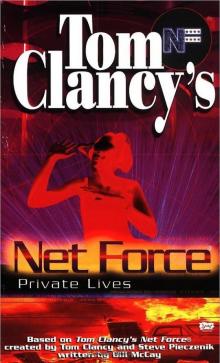 Private Lives nfe-9
Private Lives nfe-9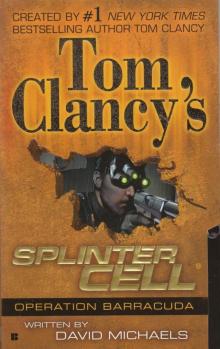 Operation Barracuda sc-2
Operation Barracuda sc-2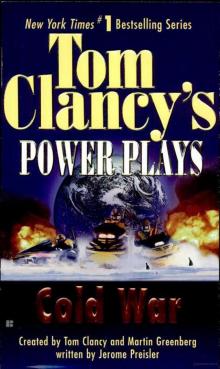 Cold War pp-5
Cold War pp-5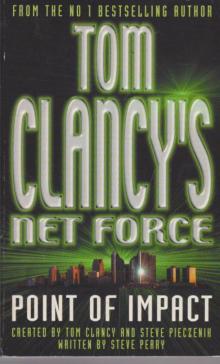 Point of Impact nf-5
Point of Impact nf-5 Red Rabbit jr-9
Red Rabbit jr-9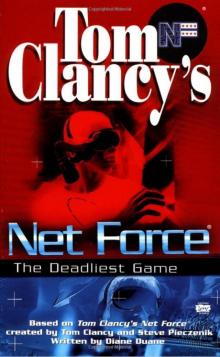 The Deadliest Game nfe-2
The Deadliest Game nfe-2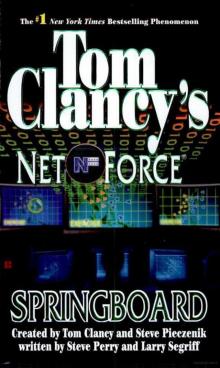 Springboard nf-9
Springboard nf-9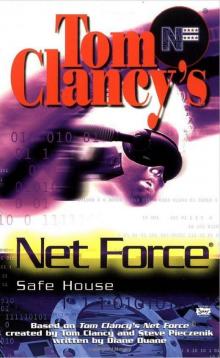 Safe House nfe-10
Safe House nfe-10 EndWar e-1
EndWar e-1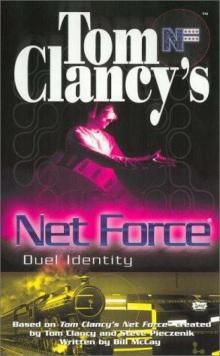 Duel Identity nfe-12
Duel Identity nfe-12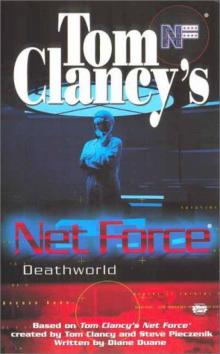 Deathworld nfe-13
Deathworld nfe-13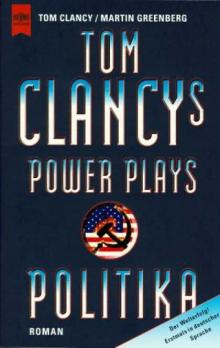 Politika pp-1
Politika pp-1 Rainbow Six jr-9
Rainbow Six jr-9 Tom Clancy's Power Plays 1 - 4
Tom Clancy's Power Plays 1 - 4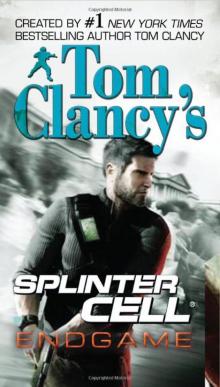 Endgame sc-6
Endgame sc-6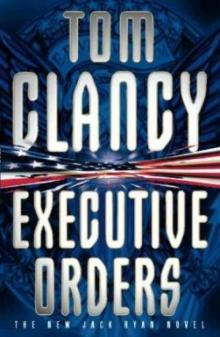 Executive Orders jr-7
Executive Orders jr-7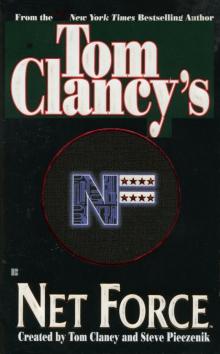 Net Force nf-1
Net Force nf-1 Call to Treason o-11
Call to Treason o-11 Locked On jrj-3
Locked On jrj-3 Against All Enemies
Against All Enemies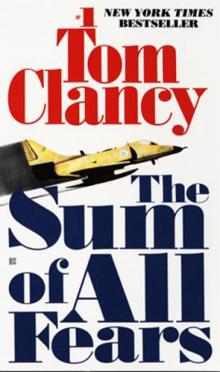 The Sum of All Fears jr-7
The Sum of All Fears jr-7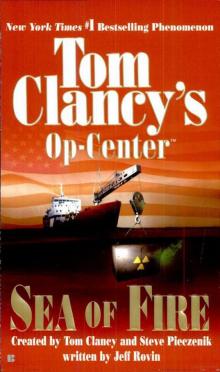 Sea of Fire o-10
Sea of Fire o-10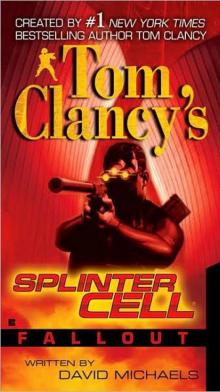 Fallout sc-4
Fallout sc-4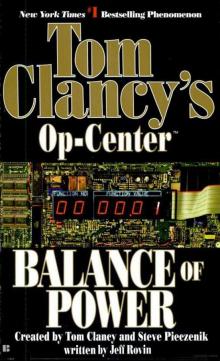 Balance of Power o-5
Balance of Power o-5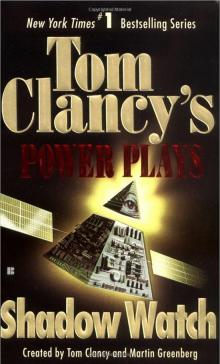 Shadow Watch pp-3
Shadow Watch pp-3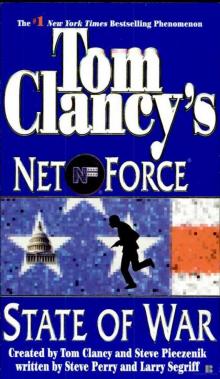 State of War nf-7
State of War nf-7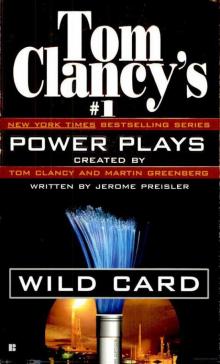 Wild Card pp-8
Wild Card pp-8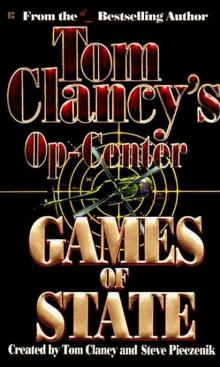 Games of State o-3
Games of State o-3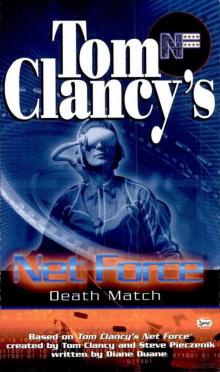 Death Match nfe-18
Death Match nfe-18 Against All Enemies mm-1
Against All Enemies mm-1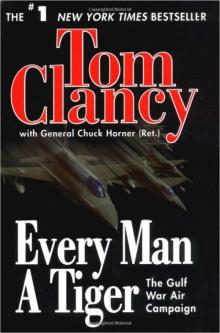 Every Man a Tiger: The Gulf War Air Campaign sic-2
Every Man a Tiger: The Gulf War Air Campaign sic-2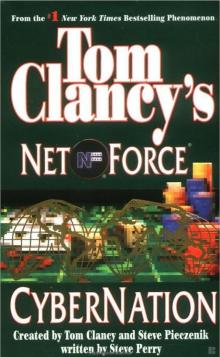 Cybernation nf-6
Cybernation nf-6 Support and Defend
Support and Defend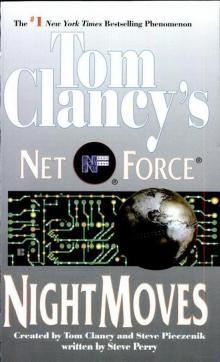 Night Moves nf-3
Night Moves nf-3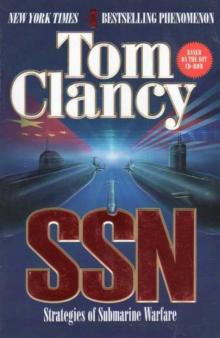 SSN
SSN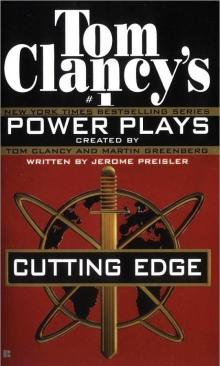 Cutting Edge pp-6
Cutting Edge pp-6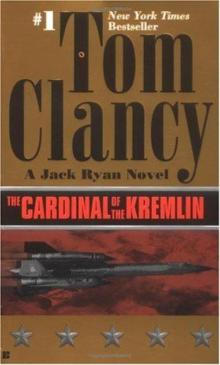 The Cardinal of the Kremlin jrao-5
The Cardinal of the Kremlin jrao-5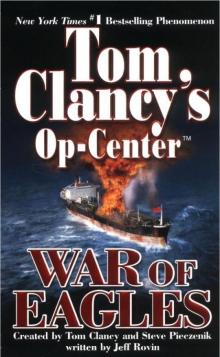 War of Eagles o-12
War of Eagles o-12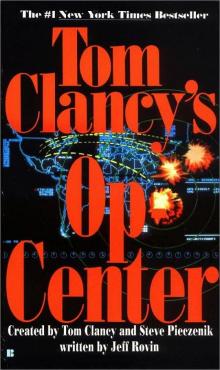 Op-Center o-1
Op-Center o-1 Mirror Image o-2
Mirror Image o-2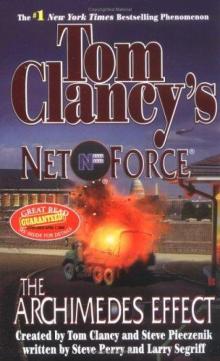 The Archimedes Effect nf-10
The Archimedes Effect nf-10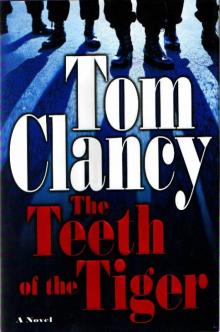 Teeth of the Tiger jrj-1
Teeth of the Tiger jrj-1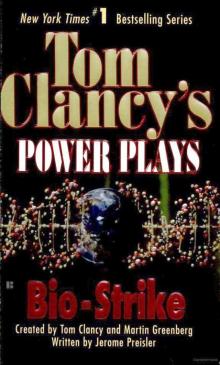 Bio-Strike pp-4
Bio-Strike pp-4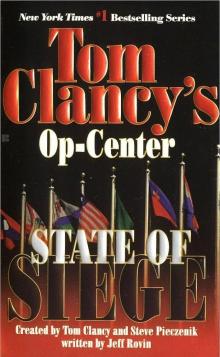 State of Siege o-6
State of Siege o-6 Debt of Honor jr-6
Debt of Honor jr-6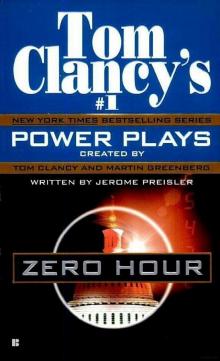 Zero Hour pp-7
Zero Hour pp-7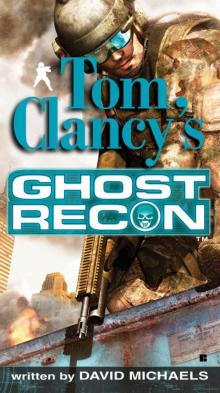 Ghost Recon gr-1
Ghost Recon gr-1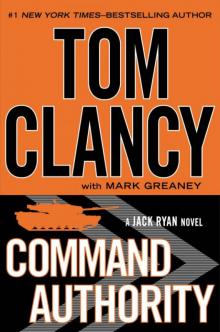 Command Authority jr-10
Command Authority jr-10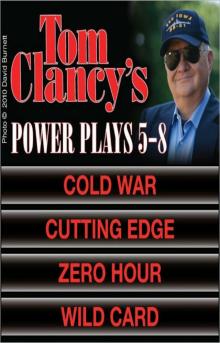 Tom Clancy's Power Plays 5 - 8
Tom Clancy's Power Plays 5 - 8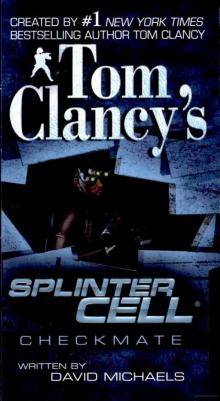 Checkmate sc-3
Checkmate sc-3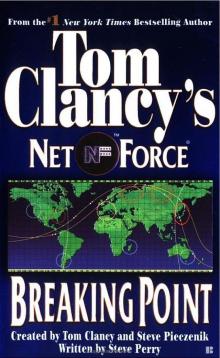 Breaking Point nf-4
Breaking Point nf-4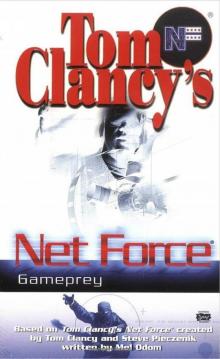 Gameprey nfe-11
Gameprey nfe-11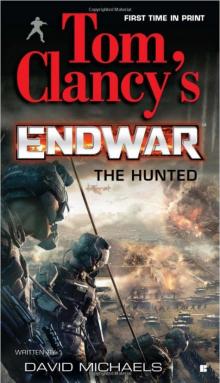 The Hunted e-2
The Hunted e-2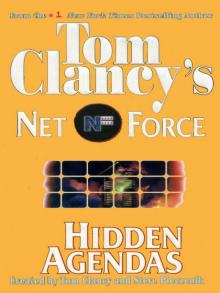 Hidden Agendas
Hidden Agendas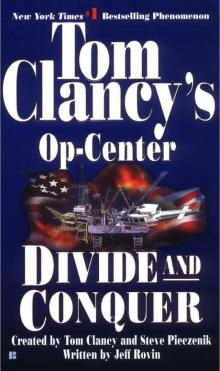 Divide and Conquer o-7
Divide and Conquer o-7